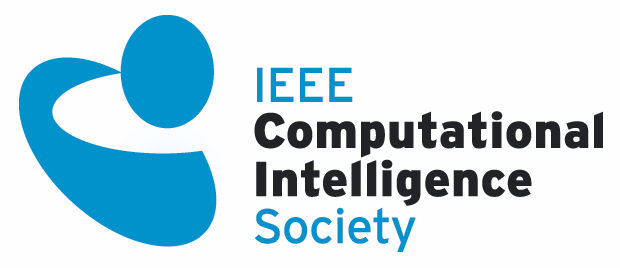Invited Talks
Interactive Design Support System Using Kansei Information
Prof. Takehisa Onisawa
University of Tsukuba, JapanMany studies on Human-Computer Interaction are performed in the field of Robotics, Human-Computer Communication Model, Interactive Design, etc. This talk introduces some studies in the field of Interactive Design (ID) among them. In this talk design is considered as an intelligent creative work such as music composition, fashion coordination, phrase animation generation, logotype design. First of all, this talk gives interactive design support system (IDSS) using Interactive Genetic Algorithm (IGA), in which fitness functions used for objective evaluation of individuals in Genetic Algorithm (GA) are replaced by subjective human evaluation. New design candidates are generated based on GA operations performed according to user's evaluation. And GA procedures are repeated until a user is satisfied with a design candidate. The advantage of the IGA application is the following: Even a beginner user can get desired and satisfied design by only evaluation of presented design candidates. This advantage is important because it is possible for even a beginner user to evaluate presented design candidates according to his/her preference. On one hand, however, IDDS using IGA has some problem: Although it is also important to know from what viewpoint a user evaluates and/or prefers presented design candidates, the viewpoint is not clear in IDDS by IGA. Then next, this talk proposes the IDDS based on Kansei information processing to deal with this problem. The proposed IDDS uses an impression factors space which is built by the analysis of data obtained in the pre-experiments. In the pre-experiments any generated design samples by giving parameter values any numerical values at random are evaluated by subject with adjective pairs, i.e., using a semantic differential (SD) method. Obtained data are analyzed by factor analysis and the impression factors space is built based on extracted impression factors. In IDDS with Kansei information, a user inputs an adjective expressing impression of a target design, which is mapped on the impression factors space by the use of concept of adjectives co-occurrence. Design samples are arranged on the impression factors apace based on subjects, evaluation. Some design candidates are generated on the impression factors space and are presented to a user. A user evaluates them and their coordinate values are changed on the impression factors space according to user's evaluation. The modification procedures are repeated until a user is satisfied with a design candidate. In the proposed IDDS it is possible to explain what viewpoints a user is satisfied with design candidates because the movement of the coordinates values of design candidates on the impression factors space can be observed. This talk also shows some design examples.
Dynamic Fuzzy Q-learning with Forgetting Facility
Prof. Motohide Umano
Osaka Prefecture University, JapanWe have two types of rules, one is a deduction type whose consequent is an assertion such as “y is A”, the other is a reaction type whose consequent is an action such as “move right” and “put it on A”. Learning of deduction type of rules has been studied in many ways, while that of reaction type has been done by reinforcement learning, which includes Q-leaning and Profit Sharing. In this talk, we focus on Q-learning. Q-learning needs only the delayed reward (evaluation) but not the correct answer of action for some state (condition). Since ordinary Q-learning treats only discrete states, fuzzy Q-learning for continuous states was proposed by P.Y. Glorennec and L. Jouffe in 1997. When we apply fuzzy Q-learning to some problems, we must design the states and actions. We must decide what attributes the state consists of and what fuzzy sets each attribute defines. This decision has a significant effect on learning process and results.
We propose a dynamic fuzzy Q-learning with facilities of not only adding pairs of state and actions but also tuning fuzzy sets in states and removing pairs of state and actions. We tune the center values and widths of Gaussian type of fuzzy sets with TD (Temporal Difference) errors. We remove unnecessary fuzzy sets in states using forgetting facility for fuzzy sets, where we increase widths a little in all fuzzy sets in states and this leads non-tuned fuzzy sets to come to have the matching degrees near 1 for all data. We introduce V value for state and extend Q-learning mechanism slightly so as to update not only Q values but also V values. We remove unnecessary pairs of states and actions using forgetting facility for V values, where we bring all V values near 0 a little and this leads non-updated V values to be 0. We apply the method to the pursuit problem in a continuous environment and illustrate the simulation results.
Brain-inspired Artificial Intelligence: Model-based and Model-free Control
Dr. Sang Wan Lee
KAIST, Korea Recent advances in artificial intelligence (AI) research have paved the way for developing human-level intelligent systems. This begs the question of how the human brain handles a wide variety of tasks, whereas AI systems need to function in a task-specific way. This approach, called brain-based AI, puts together ideas from nascent fields of AI and decision neuroscience to appreciate the human brain’s ability that cutting-edge AI lacks.
In this talk, I will focus on recent studies indicating how the human brain implements two types of Markov decision processes: model-free control that solves the Bellman optimality equation by using a reward prediction error signal and model-based control by using a state prediction error signal. I will then discuss the brain’s system of systems, which was found to allocate a second-order control weight to the model-free control and model-based control in order to trade off performance for energy and time, and vice versa.
(Multivariate) Empirical Mode Decomposition Filter Banks and a Quintet Singular Value Decomposition
Prof. Min-sung Koh
Eastern Washington University, USA Although many real-world signals are neither stationary nor linear, many traditional signal processing techniques are based on linear time invariant (LTI) assumption. Although some signals are close enough to LTI property when considered over short-time frames, in many cases, the requirement of LTI is far rigid. To handle real-world signals without stationarity and linearity assumptions, non-traditional techniques are required. A new signal processing technique without stationary and linear assumptions was introduced in Huang et al. (1998) and termed empirical mode decomposition (EMD). The EMD concept was extended to multivariate EMD (MEMD) in Rehman & Mandic (2010) to handle multidimensional (or multichannel) signals such as EEG, multichannel audios, etc. In this talk, EMD and MEMD are extended to filter bank theories and a quintet singular value decomposition (Quintet-SVD).
In the first part of this talk, undecimated and decimated (multivariate) empirical mode decomposition filter banks ((M)EMDFBs) are introduced in order to incorporate EMD/MEMD equipped with downsampling into any arbitrary tree structure and provide flexibility in the choice of frequency bands. Undecimated MEMDFBs show the same results as those of original MEMD for an octave tree structure. Since exact cut-off frequencies of (M)EMD are not known (i.e., due to data-driven decomposition), employing just simple downsampling in (M)EMD might cause aliasing. However, decimated (M)EMDFBs in this talk achieve perfect reconstruction with aliasing cancelled for any arbitrary tree. Since decimated (M)EMDFBs can be applied into any arbitrary tree structure, this extends to (M)EMD packets.
In the second part of this talk, a particular Quintet-SVD is introduced via EMD and/or MEMD. The Quintet-SVD results in four specific orthogonal matrices with a diagonal matrix of singular values. Furthermore, this talk shows relationships between the Quintet-SVD and traditional SVD, generalized low rank approximations of matrices (GLRAM) of one single matrix, and (M)EMDs. One application of the Quintet-SVD for speech enhancement is shown and compared with an application of traditional SVD. Applications of decimated/undecimated (M)EMDFBs for speech/audio, image, EEG brain signals are also included.
Visual Analysis and Representations of Type-2 Fuzzy Membership Functions
Prof. Frank Chung-Hoon Rhee
Hanyang University, KoreaThis talk presents several pictorial and graphical techniques that may be used for effectively visualizing type-2 fuzzy membership functions (T2 FMFs). In our first proposed technique, two-dimensional data sets have been modeled using grayscale entropies to make the uncertainty interpretation easier. Next, the concept of a vertical drill and a primary membership drill has been introduced to obtain information from a T2 FMF representing a multi-dimensional data set. Further, the generation of general T2 FMFs with secondary membership functions in the form of asymmetric Gaussian distributions, referred to as "snaky" surfaces, has been discussed as an extension of symmetric Gaussian T2 FMF. These graphical techniques may be applied for making inferences or predictions about the uncertainty level of a T2 FMF in applications such as data clustering, computing with words (CWW), and logic control for robots, to name a few.





